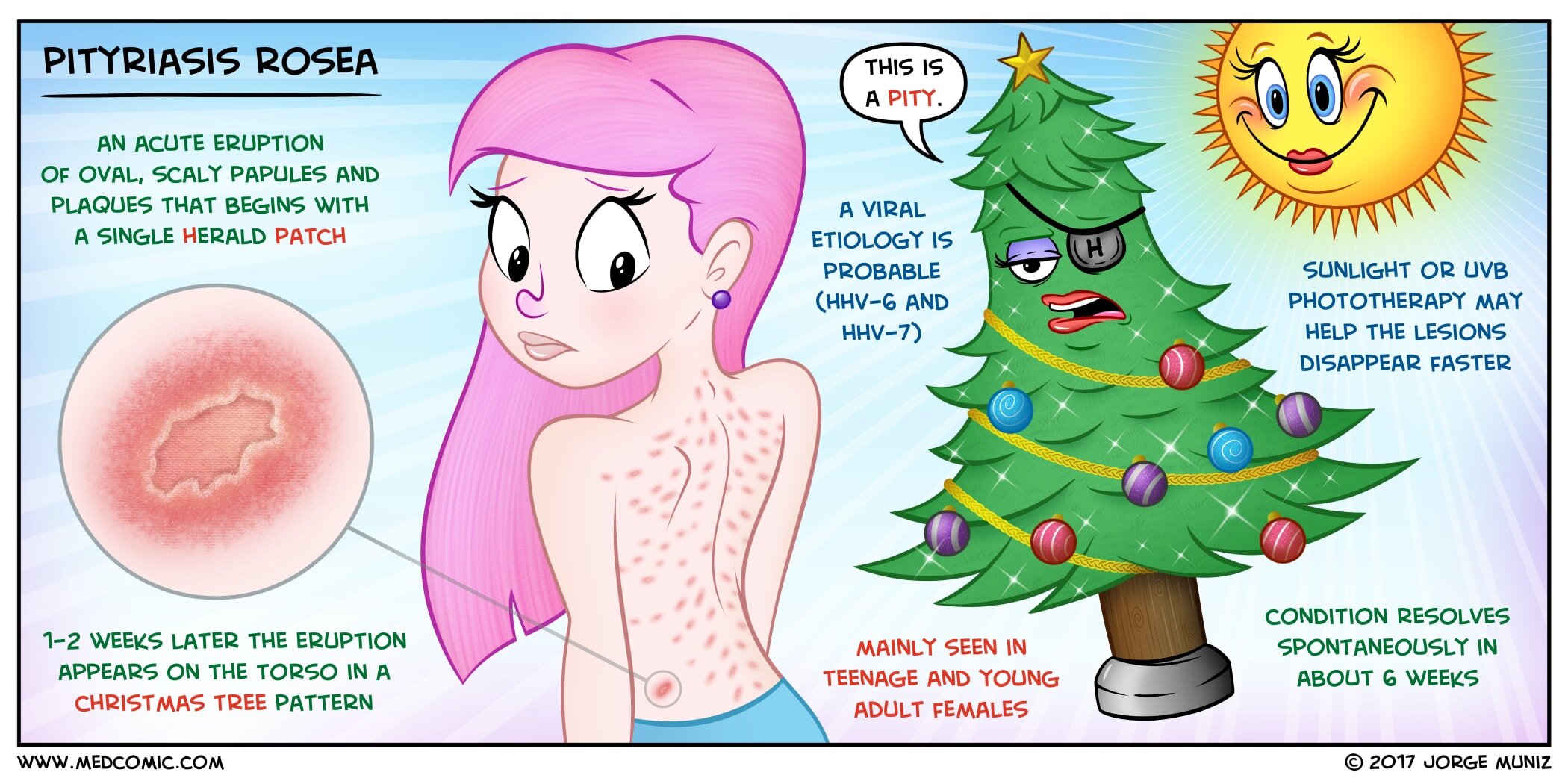Pityriasis Rosea
Pityriasis rosea is an acute, self-limited eruption of oval, scaly papules and plaques with a distinctive morphology. Females are affected more often than males, and it most common in teenagers and young adults. Pityriasis rosea peaks in the spring and fall seasons. The most probable cause has been attributed to reactivation of human herpesvirus (HHV-6 and HHV-7).
Pirytiasis rosea begins with a single lesion known as a “herald” patch, usually located on the trunk. This initial lesion is an erythematous, oval plaque with a collarette of scale inside the border. Approximately 1-2 weeks after the appearance of the herald patch, a characteristic rash appears on the torso that follows the lines of cleavage in a “Christmas tree” pattern. Pityrias rosea may be accompanied by pruritis.
The condition resolves spontaneously in about 6 weeks often requires no treatment. Sunlight or UVB phototherapy may help the lesions disappear faster if started during the first week of eruption. Lotions, oral antihistamines, and/or topical glucocorticoids may be given for itching.
